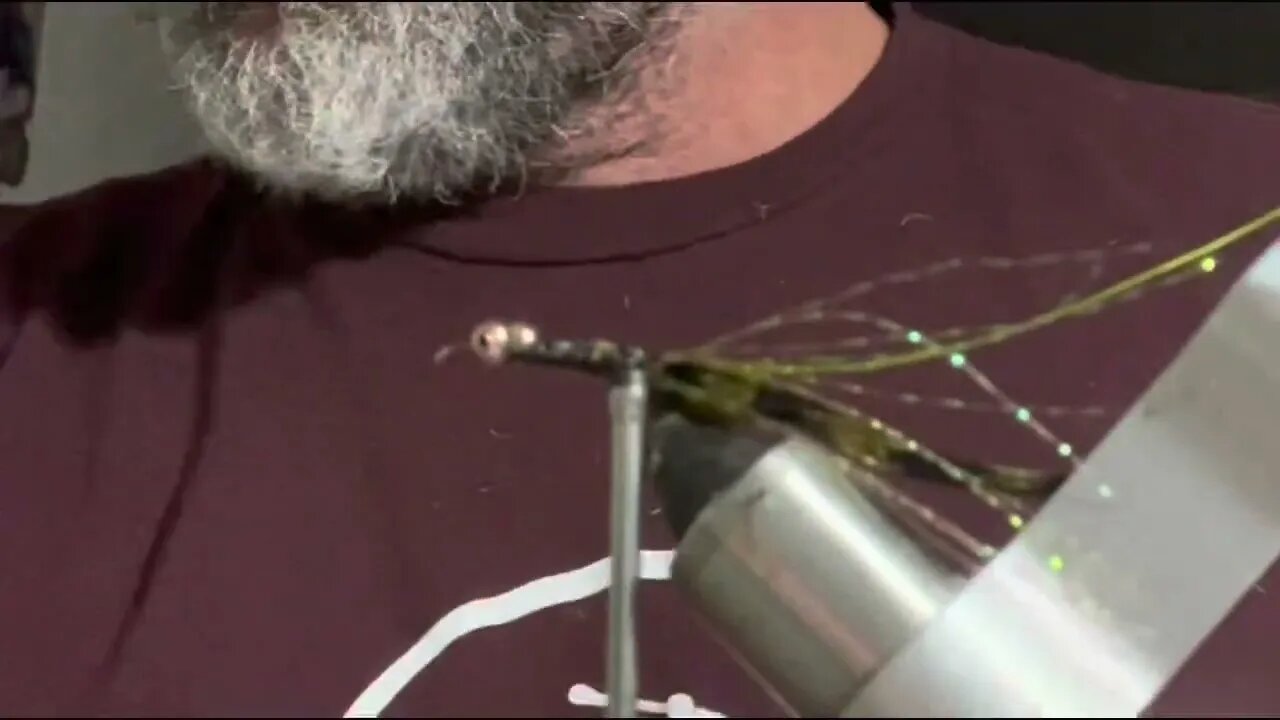Premium Only Content

The #10 Guadalupe Bug fly tying #fishing #flyfishing #kayak #bass #bhfyp #texas #river #fly
Sasquatch, Big Foot, and the ubiquitous Woolly Bugger all have one thing in common, they are indeed legends in their own individual worlds. The stories about each meander throughout books, social media, and other avenues of the population. To my knowledge, only one of them has been seen, handled, found remarkably useful, and withstood the litmus test of time: the Woolly Bugger.
If I was told that I could only have one fly pattern to fish with, it would be some version, variation of color, and size of the Woolly Bugger. Its’ accomplishments and accolades are many, and failures are few. The fly can be dressed up or down depending on the circumstances, be dull and boring, or flashy and productive with and without rubber extremities. The dress code for the Woolly Bugger extends to the imagination of a creative fly tier.
It is thought this fly originated around in the early 1970s and credited Russell Blessing, Harrisburg, Pennsylvania, with the pattern. The original fly was tied to imitated Dobsonfly larva and used to fish for smallmouth. In fact, the fly pattern is effective for many different species such as smallmouth, panfish, largemouth, trout, carp, and some saltwater species. In some larger patterns, it has proven its self-worth when fishing from a boat casting to the bank and around the structure. I have caught catfish and gar stripping it slowly back to the bot. Not many freshwater species are immune to its inviting look. Rumors of saltwater marsh applications have been forthcoming.
(https://flylifemagazine.com/of-interest-where-did-the-best-fly-ever-invented-come-form/), he describes the Woolly Bugger as one of the Top 25 Best Flies of All Time along with more in-depth history on Russell Blessing. I must agree with him about this fly. Of course, it’s a matter of opinion, but versatility breeds confidence in the fly along with the many different applications. When and how to fish it is endless.
The fly has caught fish from Maine, Michigan to Montana and Florida. Without a doubt, I would not hesitate to fish this fly first blindly on new waters. Its track record speaks volumes on its effectiveness. It resembles so many different food variations that it makes it difficult for fish to refuse at times. Looking through the eyes of a fish, I believe it somewhat resembles various nymphal imitations, leeches, small baitfish such as sculpins, and crawfish. Maybe just something an opportunistic and hungry fish wants to inspect and latch onto.
-
 2:21:11
2:21:11
Nerdrotic
5 hours ago $7.85 earnedDown the Rabbit Hole with Kurt Metzger | Forbidden Frontier #090
33.3K10 -
 2:41:13
2:41:13
vivafrei
10 hours agoEp. 251: Bogus Social Security Payments? DOGE Lawsduit W's! Maddow Defamation! & MORE! Viva & Barnes
139K192 -
 1:19:23
1:19:23
Josh Pate's College Football Show
4 hours ago $0.86 earnedBig Ten Program Rankings | What Is College Football? | Clemson Rage| Stadiums I Haven’t Experienced
17.1K -
 LIVE
LIVE
Vigilant News Network
9 hours agoBombshell Study Reveals Where the COVID Vaccine Deaths Are Hiding | Media Blackout
2,182 watching -
 1:17:59
1:17:59
Sarah Westall
5 hours agoDOGE: Crime & Hysteria bringing the Critics & the Fearful - Plus new CDC/Ukraine Crime w/ Dr Fleming
15.7K3 -
 45:39
45:39
Survive History
10 hours ago $2.10 earnedCould You Survive in the Shield Wall at the Battle of Hastings?
14.6K5 -
 1:50:28
1:50:28
TheDozenPodcast
9 hours agoViolence, Abuse, Jail, Reform: Michael Maisey
34K1 -
 23:01
23:01
Mrgunsngear
1 day ago $3.53 earnedWolfpack Armory AW15 MK5 AR-15 Review 🇺🇸
42.2K12 -
 25:59
25:59
TampaAerialMedia
1 day ago $1.19 earnedUpdate ANNA MARIA ISLAND 2025
22.3K3 -
 59:31
59:31
Squaring The Circle, A Randall Carlson Podcast
11 hours ago#039: How Politics & War, Art & Science Shape Our World; A Cultural Commentary From Randall Carlson
17.4K2